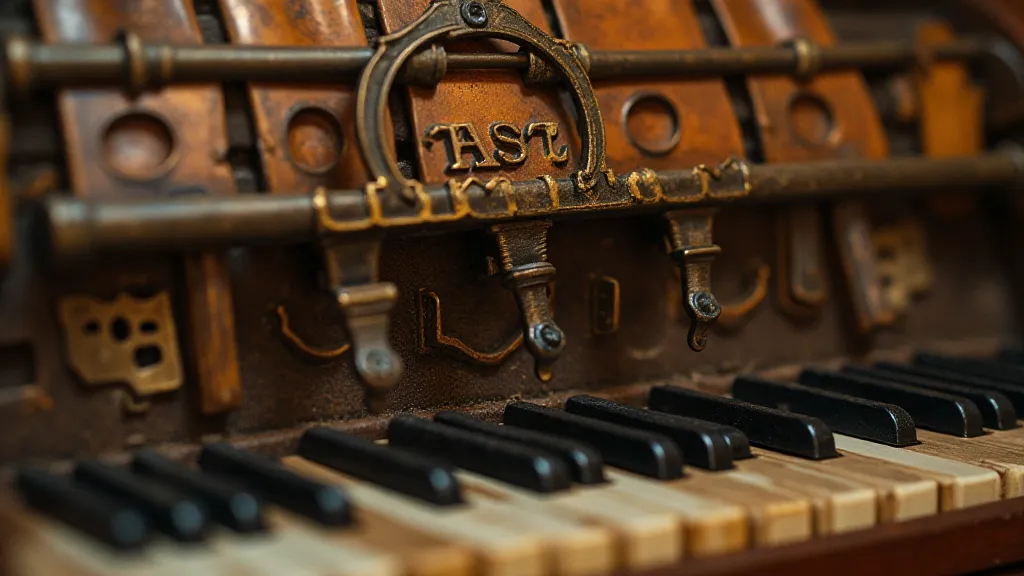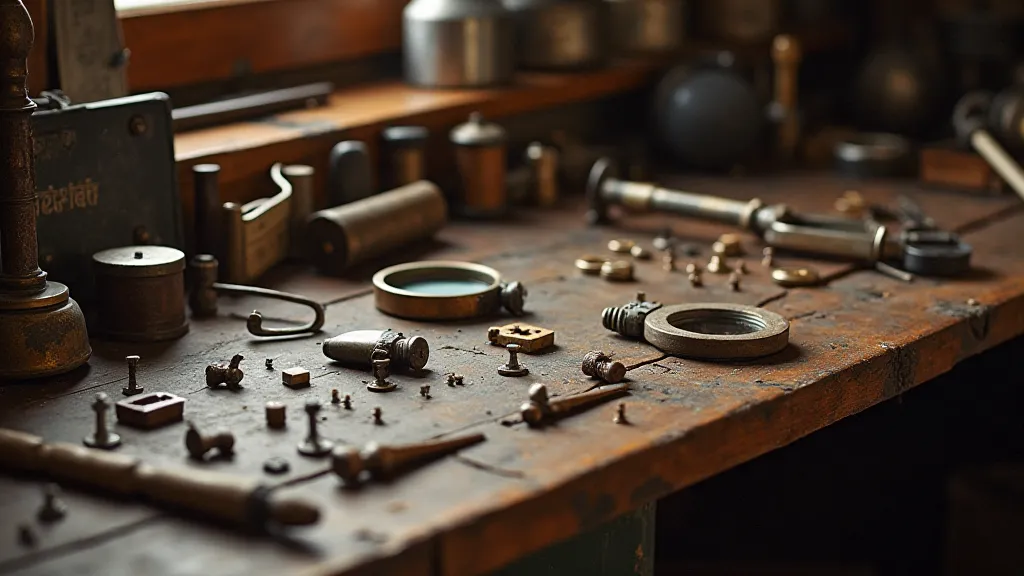The Clockwork Labyrinth: DIY Security as Creative Problem-Solving
There's a particular satisfaction derived from understanding how things work, a quiet thrill in deciphering the mechanics that govern our everyday objects. Think of an antique accordion—a marvel of engineering, a bellows of air and music, and a landscape of tiny levers, springs, and keys, all working in concert. It's not enough to simply play it; to truly appreciate it, you need to understand the intricate dance within. That same deep appreciation, that same intellectual curiosity, can be found in the world of lock picking. It’s not about intrusion; it’s about a unique form of deconstruction, a celebration of craftsmanship, and a strangely beautiful cognitive exercise.

Beyond the Key: A Journey into the Mechanics
Our relationship with locks is often a passive one. We insert a key, turn, and the mechanism yields. We rarely consider the complex choreography happening within that small, metallic enclosure. A lock, at its core, is a clever puzzle. It’s a series of pins, levers, and springs designed to resist unauthorized access. Understanding how those components interact, how they hold a door secure, opens up a fascinating world of mechanical insight.
The history of locks is remarkably rich. Early locks were rudimentary, relying on simple bolts and latches. The development of pin tumbler locks, with their intricate arrangement of pins, marked a significant advancement, allowing for increased security. These weren’t born from some singular invention, but through centuries of incremental improvements, each driven by the ongoing quest to safeguard possessions and people. Many antique lock designs reveal the ingenuity of their creators; observing the fine tolerances and precise machining demonstrates a dedication to quality often absent in modern mass production.
The Tools of the Trade: Crafting Your Kit
While some might envision lock picking tools as something illicit, the reality is that they are simply specialized instruments. A basic set typically includes a tension wrench and a selection of picks. The tension wrench applies slight rotational pressure, mimicking the action of a key. The picks, thin metal strips of varying shapes, are used to manipulate the individual pins within the lock cylinder.
Interestingly, many early lock pickers crafted their own tools. A stiff piece of metal, carefully shaped and honed, could become a surprisingly effective pick. This practice highlights a crucial aspect of the hobby: resourcefulness and problem-solving. The limitations of available tools often forced pickers to improvise, fostering a deeper understanding of the mechanics they were manipulating.
Crafting your own tools is a rewarding endeavor. It requires patience, precision, and a fundamental understanding of metalworking. It’s a far cry from simply acquiring a set from a store; it’s an active engagement with the process, a direct translation of understanding into tangible objects.
The Dance of the Pins: A Methodical Approach
Lock picking isn’t about brute force. It’s about feel, about listening to the subtle clicks and feedback of the pins as they are manipulated. Each pin must be set to the correct height to allow the cylinder to rotate. This requires a delicate touch, a keen sense of observation, and a methodical approach.
The process can be frustrating, demanding focus and patience. There's a definite learning curve, and initial attempts often yield little more than the sound of metal scraping against metal. But the eventual "click" - the satisfying release of the lock - is a uniquely rewarding experience. It’s not just about opening a lock; it's about overcoming a challenge, about mastering a skill.
Think of it like restoring an old clock. You'd spend hours carefully examining the gears, cleaning the grime, and carefully adjusting the components. The final movement, the steady tick-tock of time, would be the culmination of dedication and understanding. Lock picking embodies a similar level of intricate focus and appreciation for mechanical precision.
Beyond Security: The Transferable Skills
The beauty of this hobby extends far beyond the ability to open a lock. The skills acquired – methodical observation, problem-solving, patience, and resourcefulness – are highly transferable to other areas of life. The ability to break down a complex system into its component parts, to identify vulnerabilities, and to develop creative solutions is invaluable in countless fields, from engineering and design to art and music.
Consider a musician learning an intricate piece of sheet music. They don’t simply play the notes; they analyze the structure, understand the underlying harmonies, and internalize the composer’s intent. Similarly, a lock picker doesn’t just manipulate the pins; they understand the mechanics, appreciate the design, and recognize the ingenuity of the lock's creator.
The focus required for lock picking cultivates a mindfulness that can be applied to any task. It teaches you to slow down, to pay attention to detail, and to approach problems with a clear, analytical mind. It’s a cognitive exercise disguised as a recreational activity.
Ethical Considerations: Respecting Boundaries
It’s crucial to acknowledge the ethical considerations surrounding this hobby. Lock picking should be practiced responsibly and legally. It is essential to obtain permission before attempting to pick a lock and to respect the boundaries of others. This is strictly a recreational and educational pursuit. The potential for misuse is undeniable, and responsible practitioners recognize the importance of ethical conduct.

A Celebration of Craftsmanship and Ingenuity
The art of lock picking is more than just a skill; it's a journey of discovery, a celebration of craftsmanship, and a testament to the power of human ingenuity. It’s a connection to history, a workout for the mind, and a unique perspective on the mechanics that shape our world. It’s a quiet rebellion against the passive acceptance of manufactured objects, a re-engagement with the intricate dance of gears, levers, and springs that underpin our everyday lives. Like the delicate beauty of an antique accordion, revealing the magic held within, understanding a lock reveals the poetry of precision.





